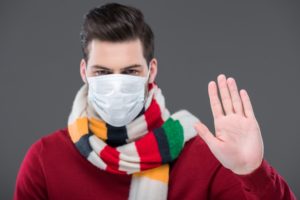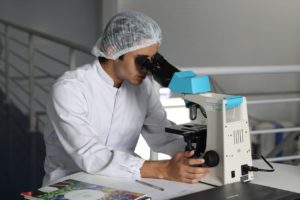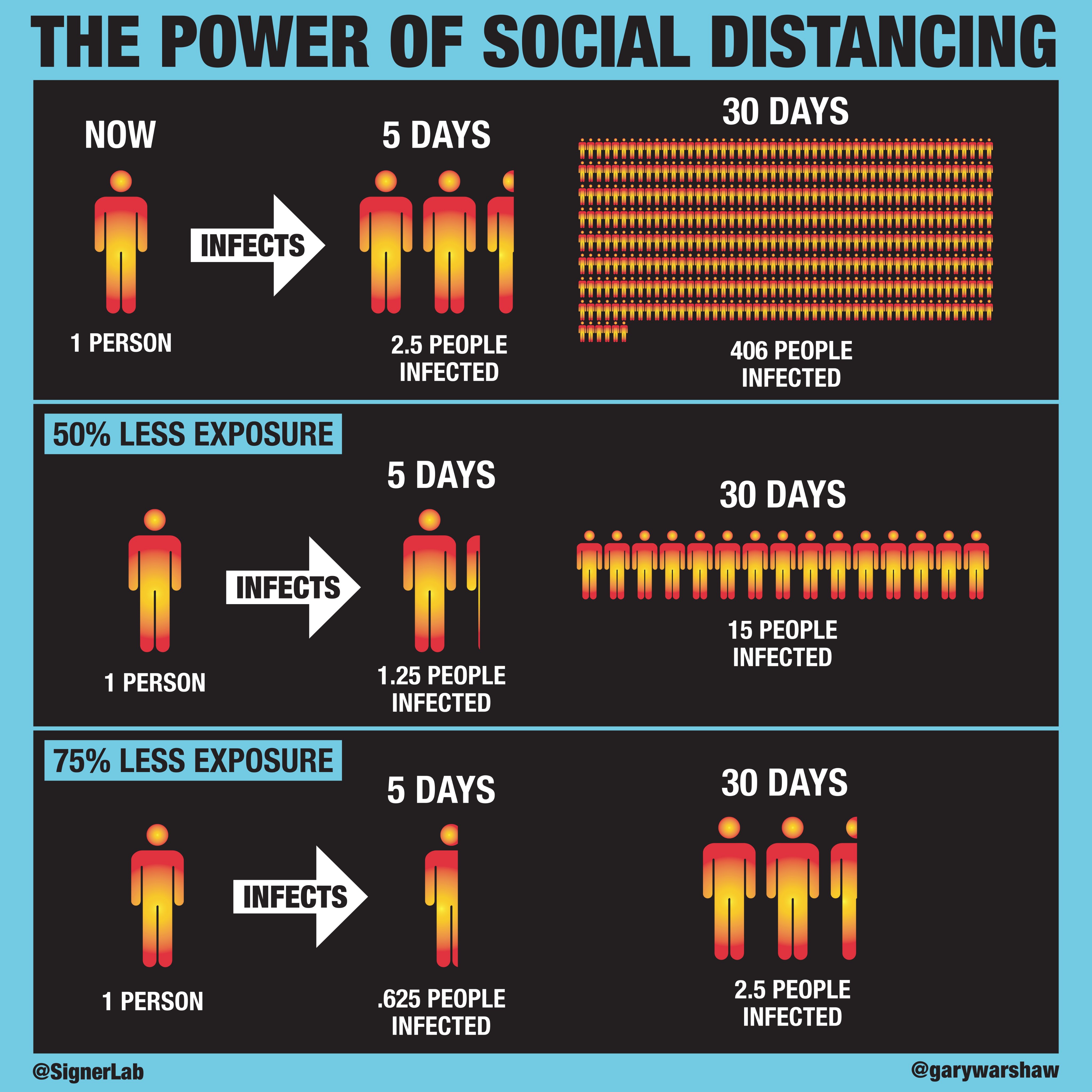In Ireland, restrictions of public life started on 13 March, so we are one month into it and last Friday it was announced that the lockdown will continue for at least another 3.5 weeks until 05 May.
So it is much too early to pain for a “back to normality”, we need a lot of patience, but at the same time, it is the right time to think (or learn) about how we will be able to get out of this lockdown situation again.
There are a lot of people that think that as long as we are patient and stay away from other people, the virus will disappear again and we can go back to normality. However, this is a highly unlikely scenario!! The Coronavirus will be with us for a long long time and can (and probably will) flare up again and again.
If you think this through, then there is no straight forward and simple way to lift the lockdown. Not on 05 May and not on 05 June or 05 July unless something else happens.
The job description of a of an efficient virus includes the requirement “must spread…ideally like wildfire”. And in that respect the Coronavirus is a very efficient virus. Not as efficient as measles, but doing a good job nevertheless.
Virus Reproduction numbers are essential
The efficiency is expressed through the “max speed of spread” or reproduction number, which is called R0 (R Zero). For measles this is around 15 and for the Coronavirus it is up to 3, for the influenza virus (flu) it is around 1.3. That means that one infected person will infect 15 others for measles and 3 others for the Coronavirus. 15 is crazy, but even 3 (or on some areas around 2.2) is exponential spread. So to reign it in the effective reproduction or Reff (R effective) has to be brought down to 1 or better below one. That would mean then that one infected person will infect just one other person or maybe even less than one person. At that point the spread is linear or is decreasing (when smaller than 1).
In Ireland we have the advantage that the country is quite small and this combined with relatively fast action that was taken, we are allegedly at the point where Reff is at around 1. I say “allegedly” because I think that the numbers of infected people are MUCH underestimated in Ireland due to the low number of tests that have been carried out. But lets hope that we are actually close to 1.
At that point, the virus is far from being gone. It is just more under control and therefore it is expected that the hospitals will be able to deal with virus patients better.
So what Reff doe the authorities aim for? The simple and complicated answer is “as low as possible”. But be aware that it is unlikely to be Zero, because the Coronavirus is devious and smart. It is hiding its presence for 5-14 days and only after that you will get symptoms. During these 5-14 days a carrier can infect a LOT of people.
With R0 being around 3, ONE single carrier could easily infect all his/her social contacts in a week and for a busy person that could amount to 3-4 per day. So in, let’s say 10 days ONE single highly socially active person could infect 20-30 people and BOOM there is a new cluster that can lead to another wildfire-like spread.
How to lift the lockdown?
If we lifted the lockdown completely, we could be back in a uncontrollable situation within 1-2 weeks. So we can’t do it that way. In Austria they are talking about lifting the limitations for smaller shops and trades people on 14 April and then for hairdressers (WHY them!?) on 01 May and then for the first few pubs and restaurants in mid May. Schools will still stay closed at that time. This is just an idea, a concept that might get changed faster than you can read this blog post, but it shows what we also might have to do.
What do we want to achieve?
That is an important question! The virus can be stopped by only one thing according to virologists and that is a high enough immunity in the population so that it can’t spread anymore. In virology terms, this is called “herd immunity”. This term got a bad meaning because the UK tried to wait for natural “herd immunity” at the outbreak of Covid-19 and now many think that “herd immunity” doesn’t work. This is totally incorrect. Herd immunity is not the same as letting the virus go rampant. Herd immunity just describes that 60-70% of the herd (or population) reached immunity. This can be achieved in two ways: Either they get immunity because they were infected, got through the infection and are now immune OR because they were vaccinated.
The natural immunity is still not certain for the Coronavirus. A trial was done with 5 monkeys that showed that after an infection and going through Covid-19 the monkeys got immune and didn’t show any symptoms when they were re-infected afterwards. But monkeys are only similar not identical to human beings, so more tests are needed to be absolutely certain. The indications are good though. The second problem is that we have no clue yet how long the immunity will last. Some viruses (chicken pox) will be kept away because our body will develop immunity forever, but with other viruses, the immunity is time limited. And with a bad ass Coronavirus, it is POSSIBLE that the immunity will only last a few weeks or months or maybe one or two years. We have no clue yet about that!
What do we need to reach herd immunity?
If we need 60% of the population to have survived Covid-19, we need a LOT more infected people than we have at the moment. Right now, there are around 9000 people tested and found infected in Ireland. IT is assumed that in countries with a high test rate around 80% had the virus and didn’t show any or no severe symptoms, so in a best case scenario the 9000 are our 20% and then we would have had a total of around 45,000 people that were infected and survived and now might have immunity. Because the test rate in Ireland is super low, let’s be generous and let’s assume that we actually have only 10% of detected cases. Then the total immunity level in Ireland after Covid-19 would be around 90,000. This is a immunity level of measly 1.8%!!
So to achieve herd immunity (60%) we need to get another 2.79 million people infected. :-O Imagine! And this has to happen soo slow that the Intensive Care Units will not get overwhelmed again. So maybe at a rate of 90,000 every 1.5 months (at the moment we might have 90,000 in one month with catastrophic consequences for ICUs). With this infection rate, it could take 31 *1.5= 46.5 months (!) to reach herd immunity!
Luckily there is an expectation that in a best case scenario we will have a vaccine in about 12-18 months. So we wouldn’t have to go through the whole infection process of 46.5 months, but would only have to do it for around 18 months. Still in these 18 months we would have to continue protect (=shelter) the high-risk groups and we would have to control the planned infection process constantly and be prepared to shut down life again as soon as it threatens to get out of control.
You can see that this is not an easy situation and that we will be dealing with that WELL after 05 May. This is a bit of a grim prospect, right!?
It will be interesting to see IF Austria will go through with their plan and it will also be interesting to keep a close eye on Denmark and other countries.
I expect that the lifting of the lockdown will have to be a very careful gradual lifting ALL the time being prepared to go into full shut down mode again if needed.
Smart Distancing + Tracing App
An alternative possibility would be to move from Social Distancing to Smart Distancing, in this case we would stay away from people that could be infected and we would continue to quarantine them for 2 weeks as soon as they get some symptoms. We would still need to cocoon the high risk group and couldn’t go back to normal international travel and large events (concerts, football matches, olympic games etc.). And we also would have to combine that with a HOPEFULLY anonymous contact tracing app that would tell you when you had contact with someone who is infected and once you had contact, you would have to self-quarantine immediately (and the app information would have to be proof to your employer that you will have to stay at home for 2 weeks). We also would need LOTS of antibody tests so that people with Coronavirus antibodies would be allowed to freely move around again without having to quarantine.
I am not a modeller or epidemiologist, so all the “models” I described above are very much simplified, but it shows that the Social Distancing and “Stay at home” measures are 100% required to protect the health care system at the moment, but they are not an ideal approach to reach a form of “normality” again.
What do you think about Smart Distancing and a Corona tracing app? If antibody tests are available, you might have to check yourself every two weeks or so. Would you be ok with that? And what if the app was NOT anonymised? Like in China now, the authorities would be able to trace EVERY move you make. Would you consider using the app still?





